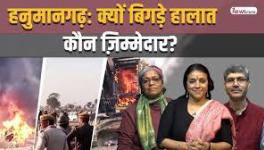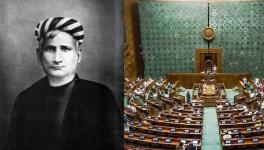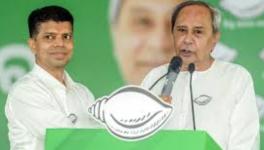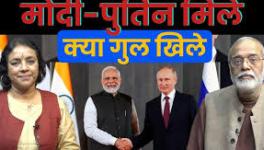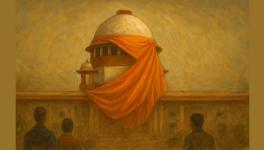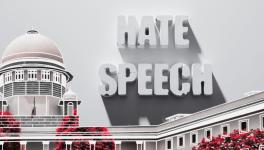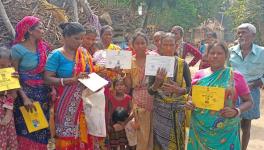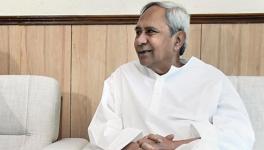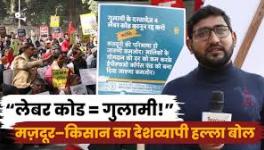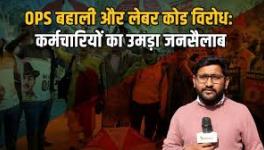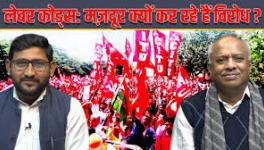What Jharkhand Results Reveal About BJP’s Hegemony
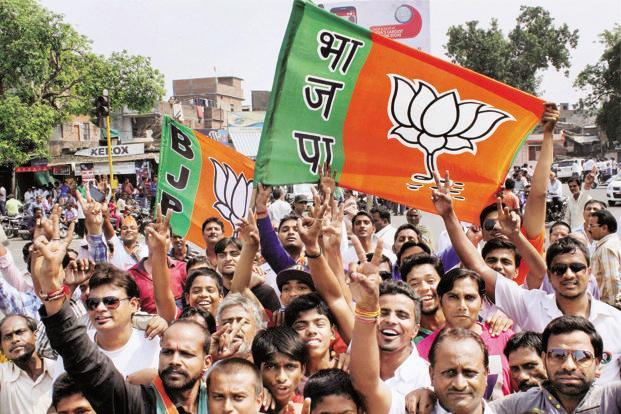
Image for representational use only.Image Courtesy : Livemint
The Jharkhand Assembly election results are a comprehensive electoral setback for the ruling political party. This setback is a major one not just because it is the first absolute electoral defeat faced by the rather triumphalist dispensation after its landslide victory in the May 2019 Lok Sabha polls, but also because it revives the traditional electoral logic of Opposition-led rainbow alliances (mahagathbandhans).
Distinct as the first clear electoral defeat in the Modi 2.0 regime, the Jharkhand polls represent a continuity with other recent elections to the Haryana and Maharashtra Assemblies. This continuity manifests itself in three ways: One, like in Haryana and Maharashtra, the Bharatiya Janata Party’s vote share and seat share went considerably lower than its Lok Sabha performance seven months ago. While in the Lok Sabha elections in Jharkhand, the BJP got a dominating vote-share of 50.96% with a seat share of 78.57%, in the Assembly election, these numbers reduced to 33.37% and 30.86% respectively. This is a significant decline.
Second, the Jharkhand results strengthen the perception of mass disillusionment over the ineffective and poor governance record in BJP-ruled states. Hence, it sends a strong message against the perception of BJP’s invincibility at the state level.
It also reinforces the idea that the Assembly elections are the “self-correcting mechanism of democracy.” Moreover, it cements the emerging understanding that national narratives such as security, illegal immigration and terrorism cannot capture the entire spectrum of social and political aspirations of a state. It also presents a limit to the aggressively majoritarian ideological narrative of the BJP, for the electoral data from Jharkhand establishes the diminishing marginal utility, even futility of communal campaigning in various constituencies.
In a way, Jharkhand’s results present a pronounced political challenge to an electoral machinery based on divisive agendas such as construction of a Rama temple, the National Register of Citizens and communally-charged demagoguery that top leaders, including PM Modi, have engaged in. During a campaign speech, Modi sought to delegitimise the anti-CAA protests by stereotyping the attire of the protesters.
Even a voter turnout of 71.69% in the final phase of the Jharkhand elections, which was conducted after discord and protests had broken out over the nationwide CAA—much higher than the average turnout of 66.03% —might reflect the public mood against CAA in the state.
Third, this continuity manifests in successful counter-hegemonic political manoeuvring and alliance-building, as seen in Maharashtra where ideologically incongruent political entities joined forces against BJP’s unprincipled tactics of dominance. In other words, the BJP pushed all non-BJP political formations to combine in a context where they did not lose public sympathy. This can be attributed to the declining appeal of the BJP’s unforgiving take-no-prisoner approach.
These three factors also contributed significantly to the United Progressive Alliance’s victory in the tribal-dominated state of Jharkhand. The fragmentation between the Jharkhand Mukti Morcha and the Congress was almost perfectly remedied by political managers, who belatedly appreciated how important it is to provide a serious electoral alternative to their voters. Hence, the usual menace of rebel candidates or independents was virtually non-existent, even as routine bickering between alliance partners was pragmatically avoided. The challenge of vote transfer, that surfaced predominantly in Karnataka between the Janata Dal (Secular) and the Congress and even in Jharkhand during Lok Sabha elections was effectively resolved.
This result is also a direct and resounding no against the anti-tribal policies of the previous BJP government under former Chief Minister Raghubar Das. The BJP tried to appeal to the 26% tribal voters in the state by ducking the criticism that Das is not a tribal, by changing its electoral slogan from ‘ghar-ghar Raghubar’ to ‘Jharkhand pukara, Bhajpa dobara’. It also sought to put national narratives such as security, illegal immigration and terrorism at the forefront, but these did not work in a context where voters rallied against the anti-tribal amendments in the SPT and CNT Act.
Land activists have argued that these amendments allow use of tribal land for commercial purposes and make it easy to transfer land, which would facilitate corporate control over tribal land.
Das was accused of being arrogant with government officials and the general public and lacking in concern for the basic needs such as healthcare and education. This made for poor governance and fostered a general dissatisfaction. Even with heavyweights such as Home Minister Amit Shah and Modi backing him, discontent among led to his losing his own seat to Saryu Roy, BJP rebel who fought as an independent. Roy was prevented him from getting a BJP ticket, but losing him proved costly—in the East Jamshedpur seat and neighbouring areas, he successfully created a strong anti-BJP narrative.
Conclusion
The results demonstrate how counting on very specific Hindutva-based national narratives to drive state electoral victories does not work even for a party that dominates the Center. The importance of
multi-party federal structures cannot be outdone by clever re-branding or new slogans, if core electoral issues are ducked. To bring national narratives to the forefront can only go so far in getting votes. Put another way, it is a tall order to expect that the BJP alone will be able to win nationally as well as all the states.
Certainly, the BJP has begun to reap negative returns for its domineering stances, its holier-than-thou posturing and strong-arm tactics. It wants to be the political hegemon and fundamentally change the grammar of India’s multi-party federal parliamentary system. The loss of natural ideological allies such as the Shiv Sena is a case in point. Ultimately, public sympathy went to the much-derided mahagathbandhan [grand alliance] idea. The question remains whether the party which sought to steam-roll “structural reforms” such as simultaneous elections—through which it could dismantle India’s federal multi-party democracy—will now engender trust with others who make up the democratic polity, perhaps like its older, Vajpayee-era avatar.
It is for the BJP to determine whether or not to moderate its stance on controversial issues and make mutually respectful power-sharing arrangements. The other option is that it will allow other political formations and vast chunk of citizens to drift to the edges of the National Democratic Alliance, from where they can drop off, one by one, into other political territories.
The Jharkhand polls possibly suggest the declining ability of Prime Minister Narendra Modi to create large majorities for his party in state elections, as he did in a series of post-2014 Assembly elections. The political implications of this will only become apparent in coming months, for the BJP has held on to a 33%-plus vote share, though that only secured it 25 seats in the 81-seat state Assembly. This vote share is still higher than all the other parties in the fray. The Opposition, therefore, will have to draw its own lessons from this result.
Prannv Dhawan is a third-year law student at NLSIU, Bangalore. Ishaan Bansal is a final year liberal arts student at Ashoka University, Sonipat. The views are personal.
Get the latest reports & analysis with people's perspective on Protests, movements & deep analytical videos, discussions of the current affairs in your Telegram app. Subscribe to NewsClick's Telegram channel & get Real-Time updates on stories, as they get published on our website.









